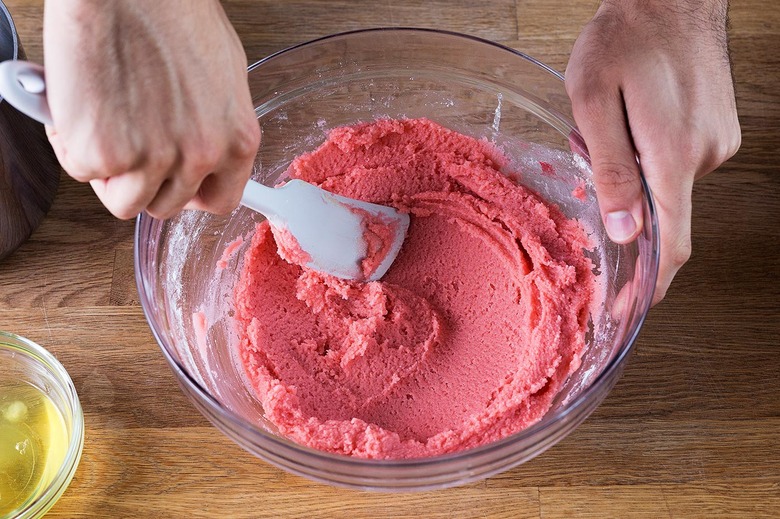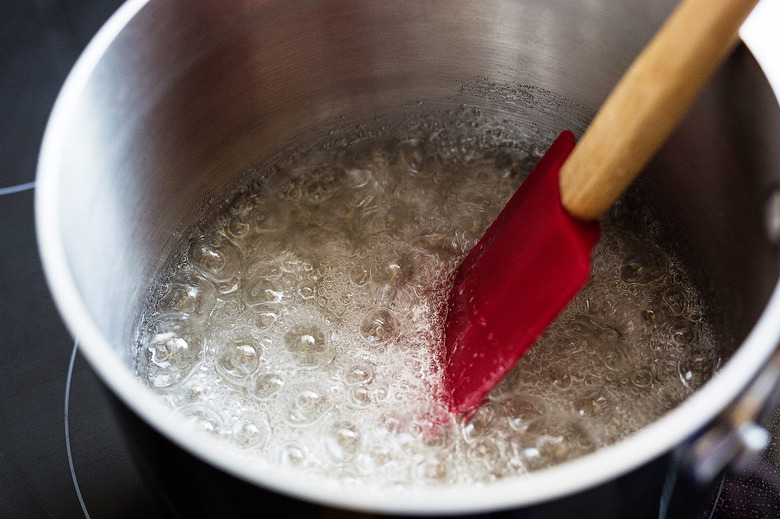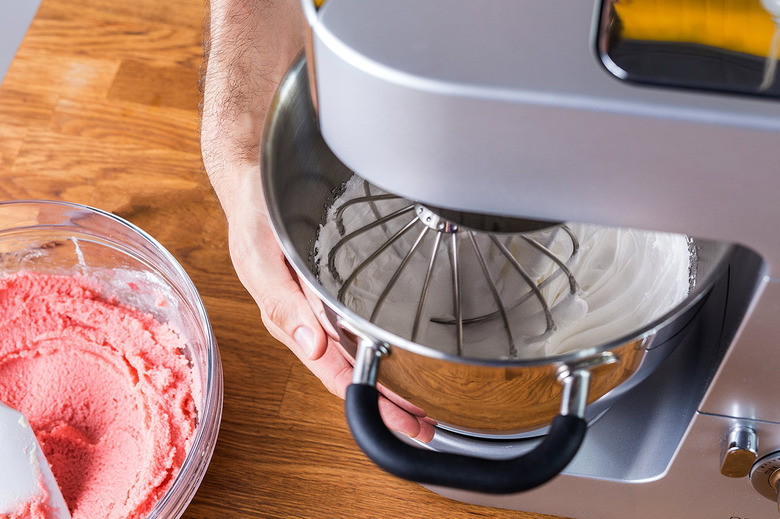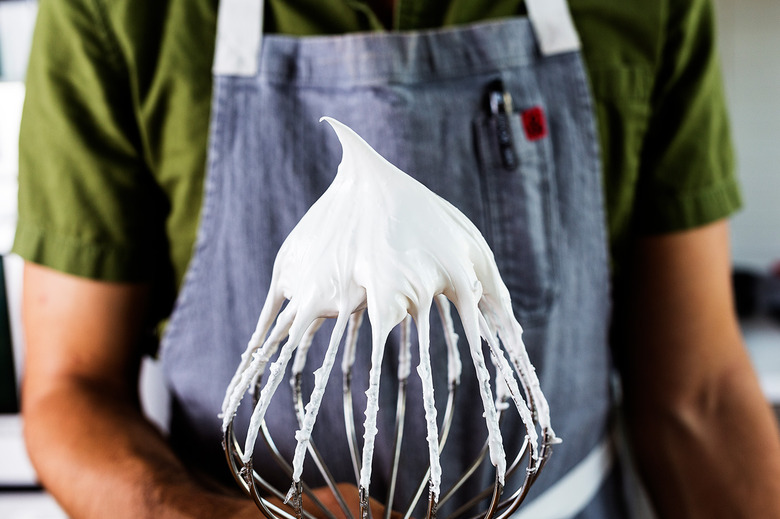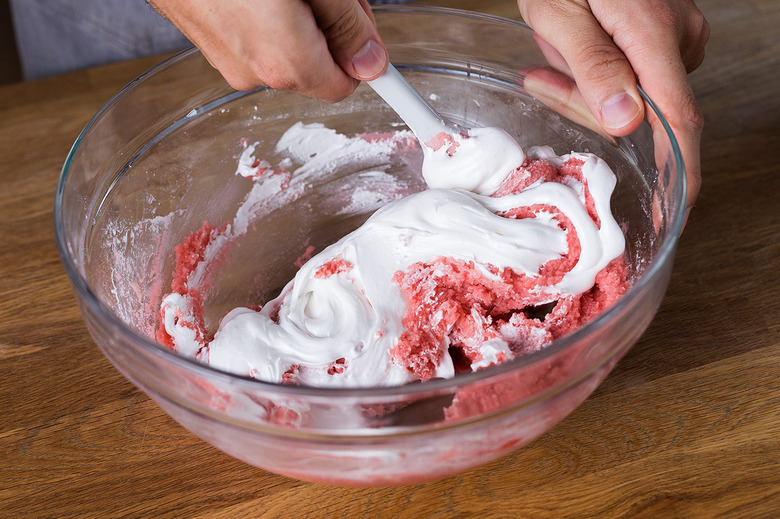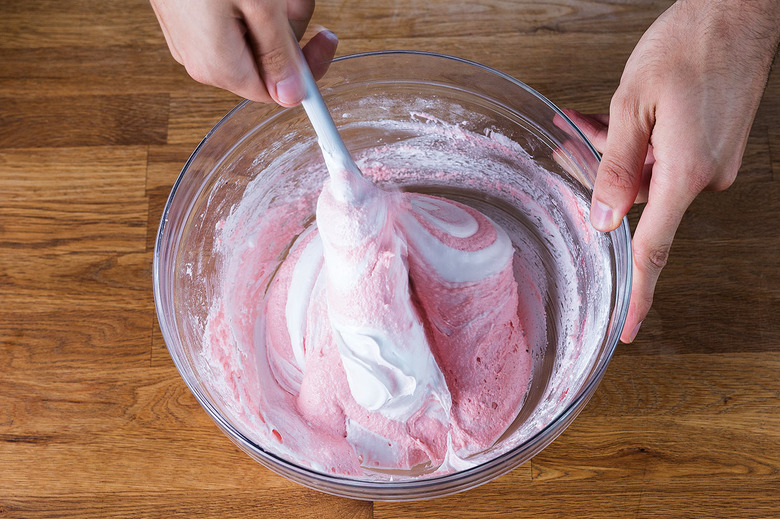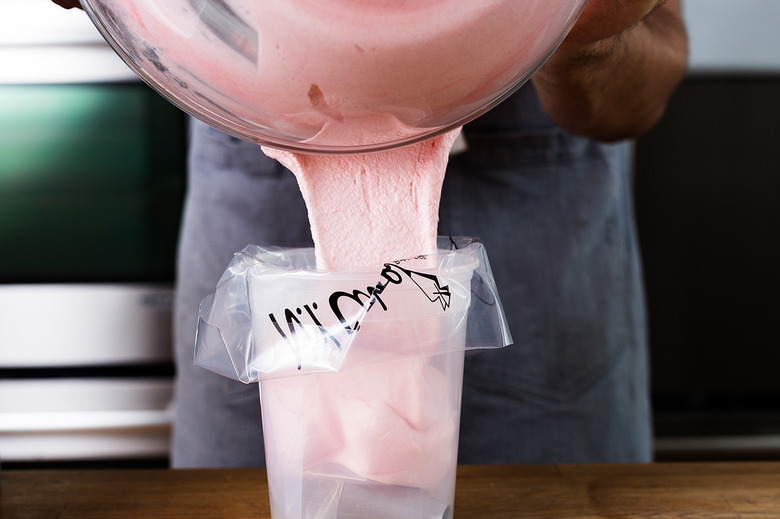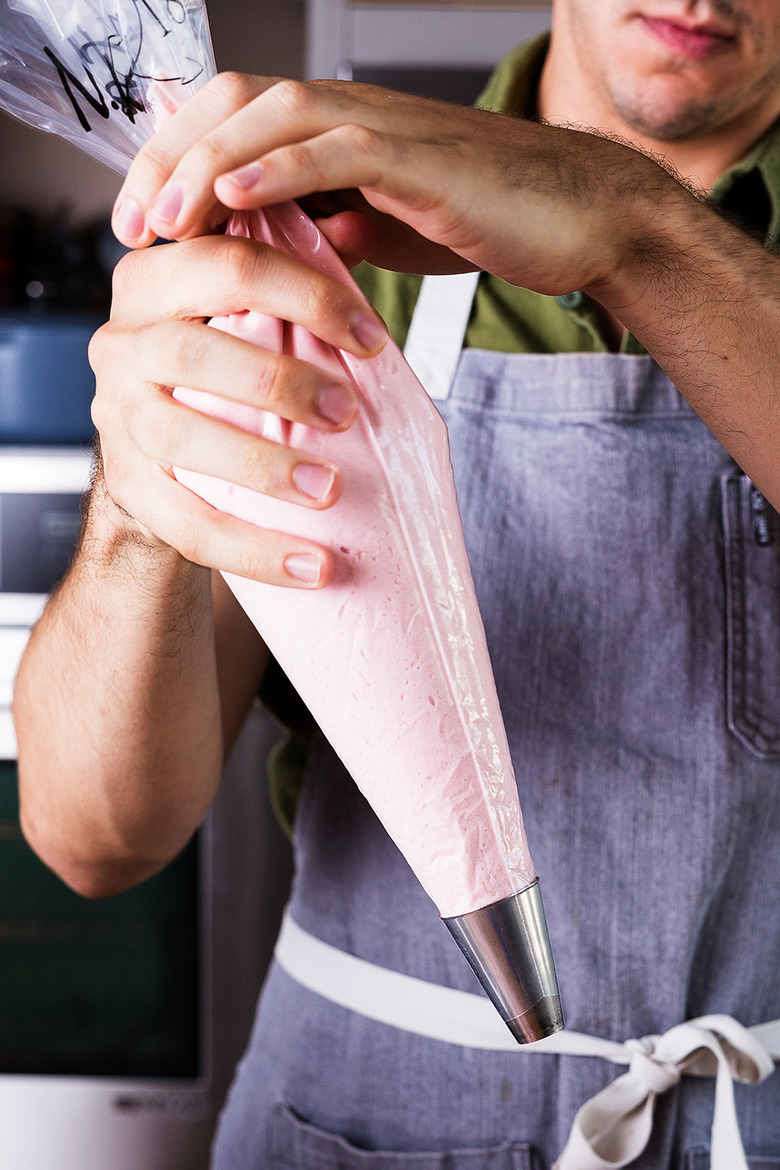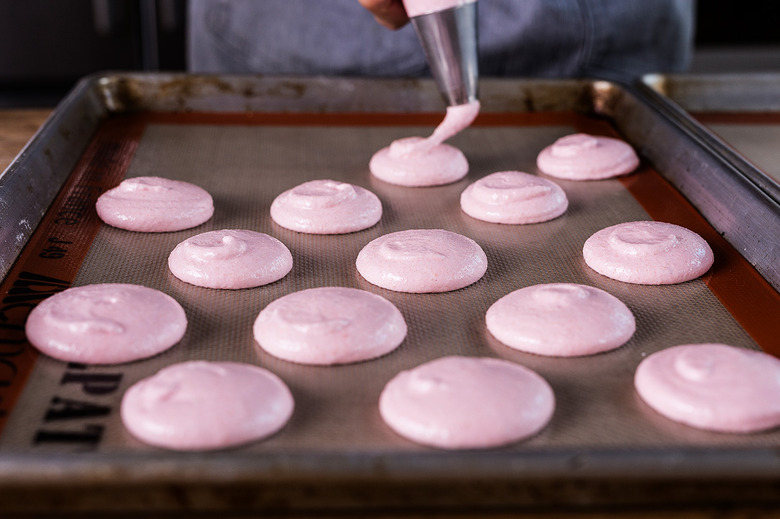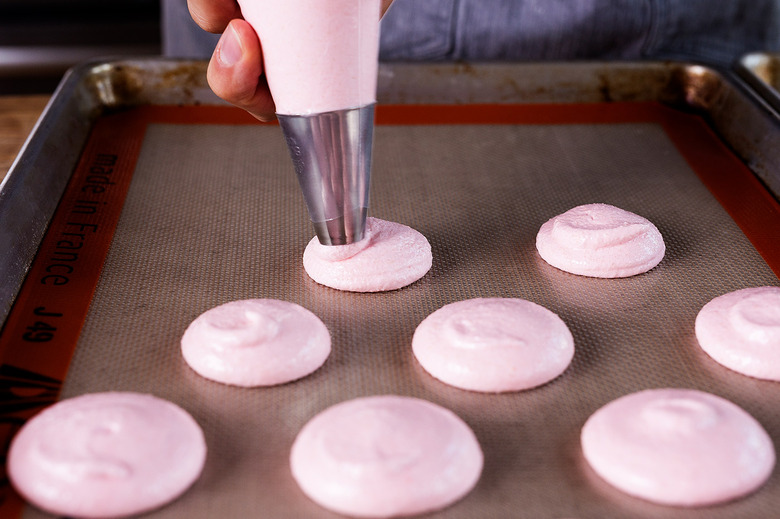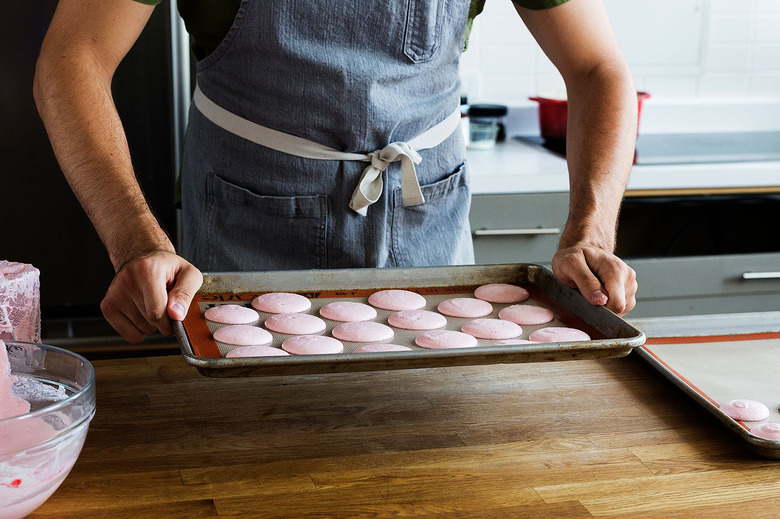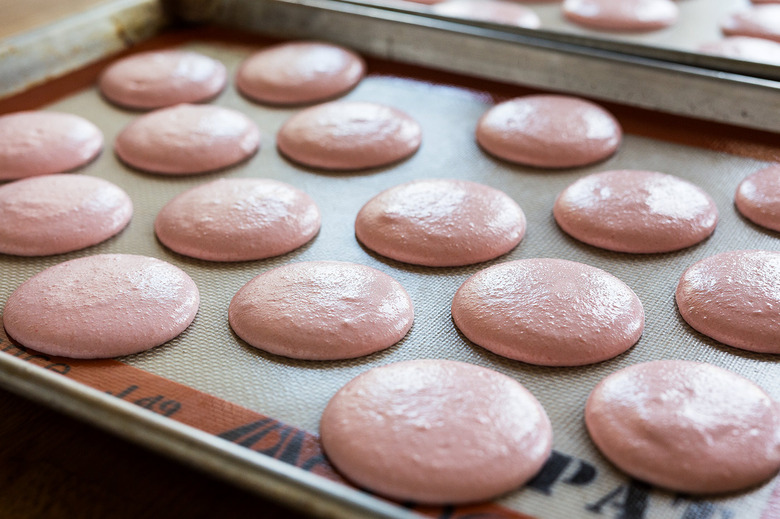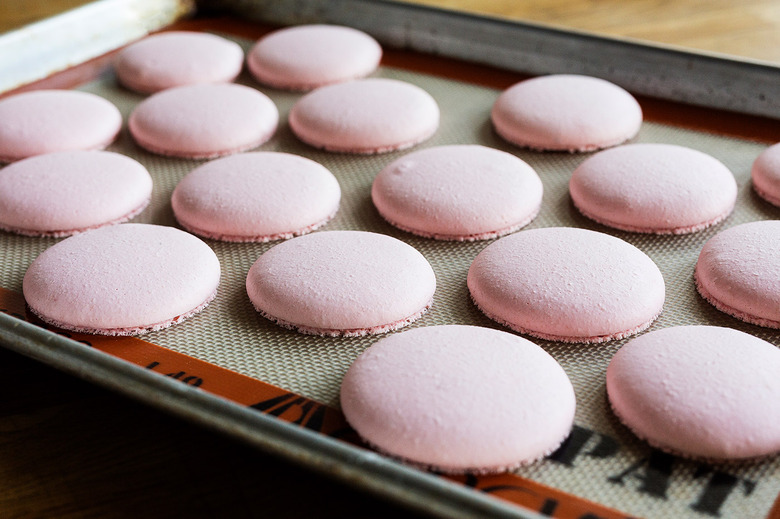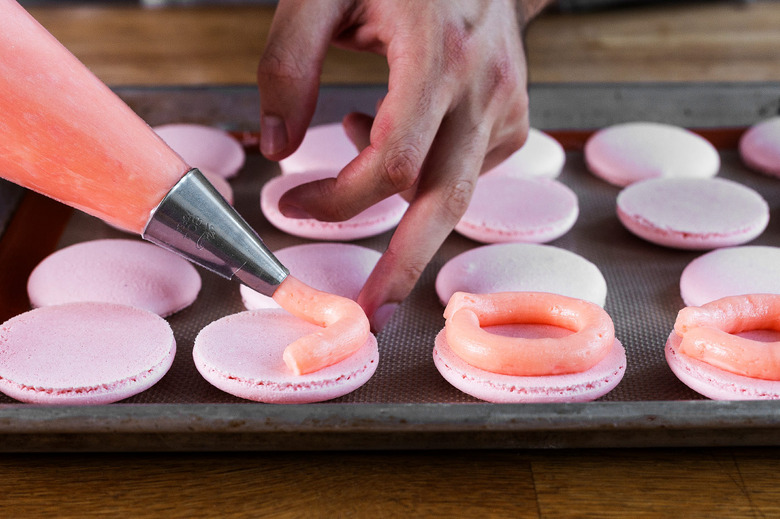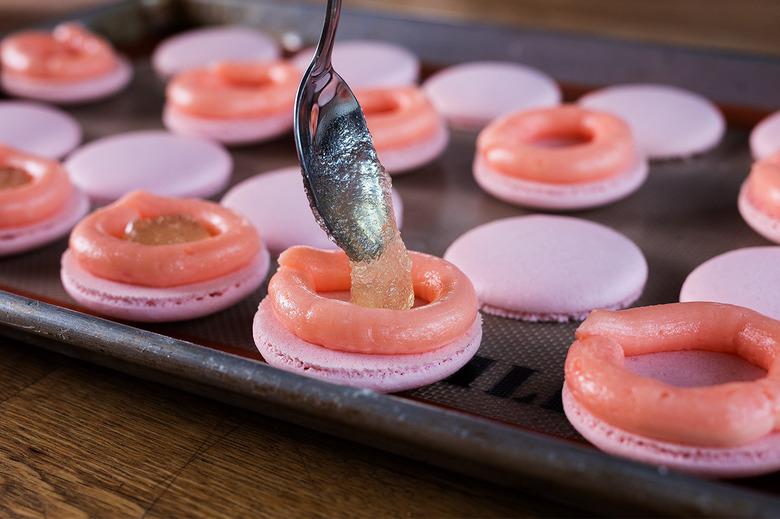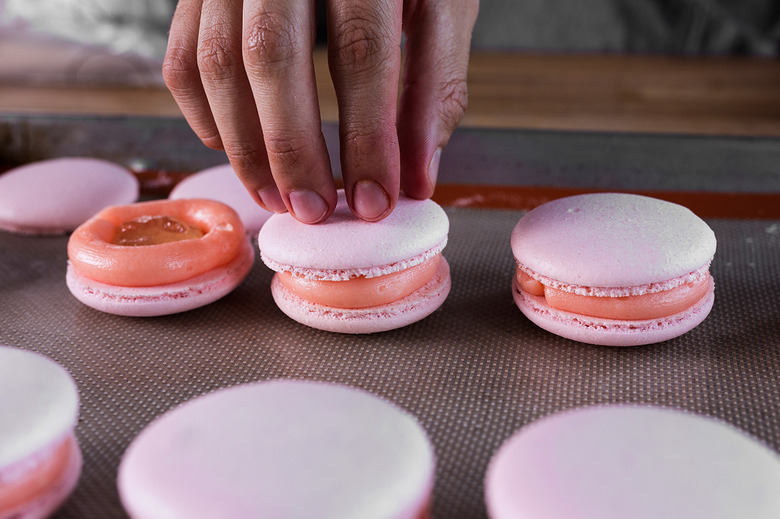How To Make Perfect French Macarons
Learn how to bake these French almond cookies like a pro
"The perfect macaron consists of two shells that are slightly crisp on the outside, and soft and chewy on the inside, with a rich and decadent filling sandwiched in the middle," Alessandra Altieri, director of Bouchon Bakery, explains when asked about how to perfect the fancy French favorite.
No other cookie is as elegant as the macaron, which is why we are on a quest to bring a taste of Paris to your kitchen. And while these pastries do require technical skill, the payoff is worth it (trust us). Make these cookies correctly, and you are left with a dessert that not only happens to be gluten free, but will be the prettiest thing you bake all year.
Our recipe goes the classic route, focusing on a traditional flavor that happens to be one of our favorites: rose. Pink macaron shells are filled with a ring of rose buttercream and a spoonful of Champagne jelly for the perfect balance of floral sweetness and buttery richness (see the recipe).
To help get you started, we chat with pastry chefs from some of New York's best bakeries for tips on becoming a macaron master at home. We even have a step-by-step photo slideshow to guide you along the way.
Meringue the alarm. The batter for these cookies is made by folding meringue into a paste of almond flour, confectioners' sugar and egg whites—but first you'll need to decide which type of meringue to go with (French, Italian or Swiss). Need help choosing? Here's the breakdown: French meringue is egg whites beaten with sugar, Italian is egg whites beaten with a cooked sugar syrup, and Swiss is egg whites and sugar cooked in a double boiler and beaten. Altieri, like us, uses an Italian meringue, which is more stable when making a large batch of macarons.
Once you've decided on a meringue, be gentle when folding it into the batter. "You want to be sure to add small amounts of meringue into the almond paste to gently lighten the batter," Altieri instructs. "You should be able to pick some up with your spatula, and it should slowly fall off."
Develop a foot fetish. You know what they say about big feet . . . and the "feet" here refer to the bubbling rim of the risen macaron shells, which means the bigger the feet, the better the batter.
Loia's secret to getting the, er, biggest feet for your buck: Use aged egg whites when making your meringue. Aged whites have less moisture, which makes for a sturdier meringue overall and, thus, the potential for larger feet. To assist in the aging process, keep your egg whites in an airtight container in the fridge for one to two days before you are ready to bake.
Shell's angels. Once your batter is made, it's time to pipe. "When you are starting out, it helps to count each time you pipe to ensure the macarons come out the same size," Loia suggests. "You also need to make sure you hold the tip a steady 90 degrees, [so] your batter doesn't come out on a slant. This will cause [the macarons] to bake sideways in the oven."
The most important part of piping? Slamming the tray. That's right, banging the baking sheet on a sturdy flat surface spreads the loose batter slightly and smoothes the tops, leaving you with a matte, eggshell appearance and those perfect feet.
RELATED Unzip the Possibilities "
Fillers are encouraged. You worked hard to get the perfect macaron shell, so make sure your filling is on par. "Macarons are intended to be a delicacy, [eaten] one or two at a time, so [they] need to be on point and make an impact," Altieri says. "You want the filling to be full of flavor, so the sweetness of the shell is not overpowering."
By forming a ring of floral rose buttercream on the outer rim of the bottom macaron shell, like we do here, you will then be able to easily fill the macaron with bright Champagne jelly minus the fear of it spilling out when you eat it—which would be macaron sacrilege.
Now that you have the basics, it's time to make macs on macs.
All about that base
The base of the meringue batter is a paste of almond flour, confectioners' sugar and egg whites. Making sure this paste is completely smooth is crucial for a smooth batter.
Hot in here
Our recipe calls for an Italian meringue, which means first making a sugar syrup that reaches 234º to be streamed into the egg whites.
Check the temp
The best part of an Italian meringue is that you don't need to worry about over-whipping it. Keep mixing until the bowl is no longer warm and the meringue is cool to the touch.
Take a peak
You want to make sure stiff peaks have formed to ensure the batter reaches the proper consistency and rises properly.
Fold it good . . .
To fold the meringue into the almond flour mixture, start by mixing in a third of the batter carefully to incorporate completely and lighten the mixture.
. . . Then fold some more
Once lightened, the rest of the meringue can be carefully folded in, making sure not to deflate the mixture by overmixing.
Pour one out
Using a quart container or jar, open a piping bag fit with a round tip over the rim to easily fill with the batter.
Ready to pipe
Tighten the bag, being sure to release any air bubbles for clean piping.
Swoop in
Working quickly, pipe 2-inch wide meringues while keeping the bag vertical and swooping the tip to release the piped macaron.
Work quickly
Try to pipe all the macarons within a few minutes to prevent the first from drying out.
Slammer time
As soon as you finish piping, slam the tray on a sturdy work surface to smooth out the shells.
Let 'em dry
Let the macaron shells dry out until they are no longer tacky, about 30 to 45 minutes depending on humidity.
Baking time
Bake the macaron shells until they have risen and are slightly dry when broken open, about 20 minutes.
Put a ring on it
Pipe a ring of buttercream at an angle to let the shell rotate as you pipe.
Get ready for this jelly
Spoon the jelly into the ring of buttercream, which prevents any from spilling out of the shells.
Macs on macs
Finally, top each with another macaron shell and press lightly to sandwich the two shells together.


